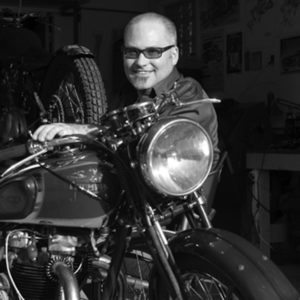
Born and raised in Mar del Plata, Buenos Aires, Henry was fascinated from his mid-1970s boyhood by motorcycles. Influencing that interest was the popular American television show, CHiPs. Pretending his simple pedal bike was a Highway Patrol motorcycle, he’d tear around the streets, chasing criminals just like his hero, Ponch. “Then, in 1978, when I was 11, my mom bought me a Honda PC50 moped – and my dreams came true! Four more Hondas in a row followed, including a 100cc, 550cc 400cc and 650cc.”








Greg Williams is a motorcycle writer and publisher based in Calgary who contributes the Pulp Non-Fiction column to The Antique Motorcycle and regular feature stories to Motorcycle Classics. He is proud to reprint the Second and Seventh Editions of J.B. Nicholson’s Modern Motorcycle Mechanics series. Follow him on IG: @modernmotorcyclemechanics



